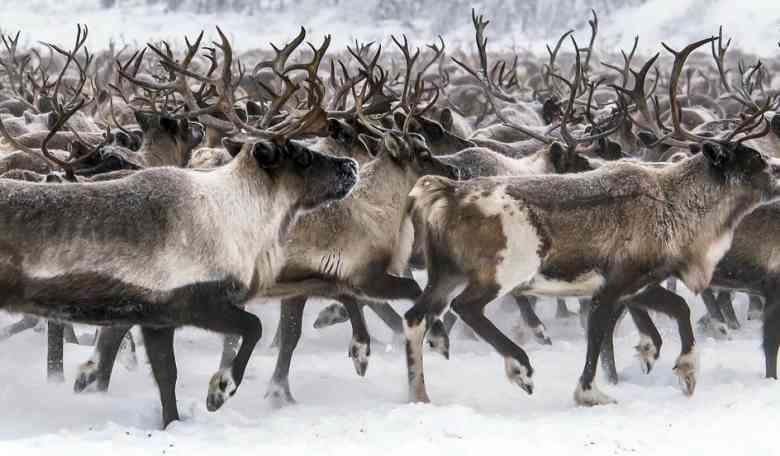Some reindeer migrate over 3000 miles in a year than any other mammal

Some Reindeer Migrate Over 3000 Miles in a Year than any Other Mammal

Reindeer, also known as caribou in North America, are fascinating creatures that engage in one of the most impressive annual migrations of any land mammal on Earth. It is estimated that some reindeer travel over 3000 miles in a single year, surpassing the migration distances of any other mammal species. This impressive feat of endurance and navigation takes place in various locations across the Northern Hemisphere, including Arctic tundra, taiga, and mountainous regions.
The Arctic Climate and Reindeer Migration
Reindeer have adapted to survive in the cold and harsh arctic climate. They are specially equipped with thick insulating coats and large hooves that help them traverse through deep snow and icy terrains with ease. These remarkable creatures exhibit several unique behaviors, with migration being one of their most extraordinary aspects.
The Reasons behind Reindeer Migration
The primary reasons behind reindeer migration are food availability and reproductive considerations. Reindeer rely on the ever-changing distribution of food resources in their fragile environment. During the arctic winter, when food becomes scarce in one area, they must venture out in search of alternative grazing grounds. This instinctual urge to find food drives reindeer to undertake extensive migrations, often moving from the barren tundra to more favorable areas where vegetation is abundant.
The Challenging Journey

The migration of reindeer is not an easy undertaking. They must overcome various obstacles, including treacherous terrains, freezing temperatures, and the risk of predators. The journey can be perilous, especially for newborns and weaker individuals. However, their strong herd instinct helps them stick together and support one another through the challenges they encounter along the way.
The Longest Reindeer Migrations
While not all reindeer populations engage in lengthy migrations, some herds travel remarkable distances. For example, the Taimyr herd in Siberia holds the record for the longest migration of any land mammal. Over the course of a year, these reindeer move approximately 3000 miles, crossing frozen rivers, vast tundra expanses, and rugged mountains.
Conservation and Protection Efforts
Given the crucial role reindeer play in the ecosystems they inhabit, numerous conservation and protection efforts have been implemented to safeguard their populations. It is critical to ensure the preservation of their migration routes, natural habitats, and sustainable grazing grounds. These initiatives aim to maintain the delicate balance between reindeer and their environment, allowing future generations to marvel at the wonders of their extraordinary journeys.
Conclusion
Reindeer migration is a remarkable natural phenomenon, capturing the imagination and awe of people worldwide. These incredible animals traverse vast distances, enduring harsh conditions and overcoming numerous obstacles on their search for food and optimal breeding grounds. Understanding and appreciating the significance of reindeer migration is essential for fostering a sense of admiration for the natural world and inspiring conservation efforts to protect these majestic creatures and their habitats.
Source: Encyclopedia Britannica
Tags
Share
Related Posts
Quick Links
Legal Stuff

